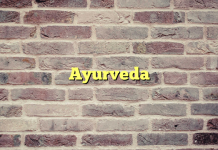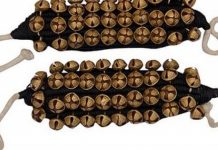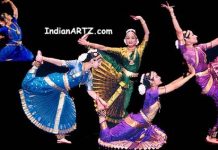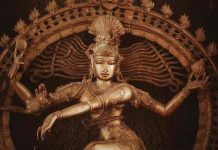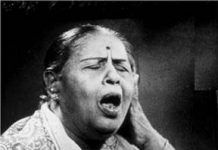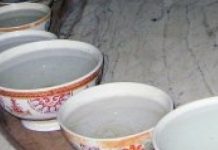SARASWATI VINA
Saraswati vina (Saraswathi veena) is the instrument associated with Saraswati, the goddess of learning and the arts. This instrument is common in south India and is an important instrument in carnatic sangeet. It is variously called simply vina, or veena, the “Saraswati” part being implied.
The saraswati vina has an interesting construction. It has a body made of wood, generally, this is jackwood. The highest quality vinas have the entire body carved from a single block of wood, while the ordinary vinas have a body which is carved in three sections (resonator, neck and head). There are 24 frets made of brass bars set into wax. (see “Fretting and Fingering the Vina”) There is another resonator at the top of the neck. This is no longer a functioning resonator, but is mainly used as a stand to facilitate the positioning of the instrument when it is played. Because it is no longer functioning it is not unusual to find that this upper resonator may be made of acoustically neutral materials such as paper mache, cane or other similar materials. Unlike north Indian instruments like the sitar, the saraswati vina has no sympathetic strings. It has only four playing strings and three drone strings (thalam). (see also “Tuning the Vina”) The main bridge is a flat bar made of brass. This bar has a very slight curve. It is this light curve which gives the vina its characteristic sound. A major centre for the manufacture of the saraswati vini is in Tanjore.
The playing position is shown below. We see that the performer sits cross-legged on the floor, the small vestigial gourd rests against the left thigh while the main resonator rests on the floor. The right hand plucks the strings while the left hand frets the instrument.
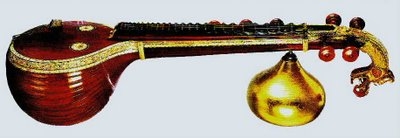
The Saraswati Veena is one of the most ancient and revered of South Indian instruments. Together with Bansuri flute this form of veena may be seen in many sacred pictures of Saraswati, goddess of music.
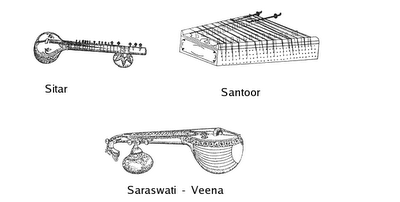
Have you ever seen “Rudra Veena”? The Rudra Veena is an instrument that is rarely heard on the concert stage now. Although,two centuries ago it was regarded as the king of all instruments. The duration of these veena’s notes is incredibly long. The sound produced by rudra veena composed of regular, uniform vibrations. The Rudra Veena is considered the mother of all string instruments. Around since very ancient time, Lord Shiva is said to have played this instrument when he created whole Brahamanda . The belief is that Shiva and Parvati used to dance to the music that emanated from this instrument.
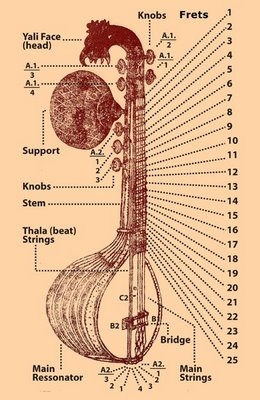
Saraswathi Veena Chart: Discription of Veena
Melody is produced on four metal strings that run above the frets. These are stretched over a wide bridge that sits on the body of the veena. Three other strings run alongside the neck of the instrument. These are used for maintaining time and for playing the drone. The performer, who sits cross-legged on the stage, rests the small resonator on the left lap. The fingers of the left hand are used to press, pull and glide on the frets, while the fingers of the right hand are used to pluck and twang the strings.
The veena is one of the most ancient string instruments of India. Its origin can be traced back to the ancient yazh, a stringed instrument, similar to the Grecian harp. Bharata, in his Natya Shastra, explains the theory of the 22 sruti-s in an octave with the help of two experimental veena-s.
The veena is a complete instrument and provides the basic components: sruti, laya and sahitya. Its main attraction is the mellow tonal quality which is capable of evoking a meditative atmosphere

![PANCHAKARMA [ Detoxification ] PANCHAKARMA [ Detoxification ]](https://indianartz.com/blog/wp-content/uploads/2017/07/PANCHAKARMA--Detoxification--218x150.png)
